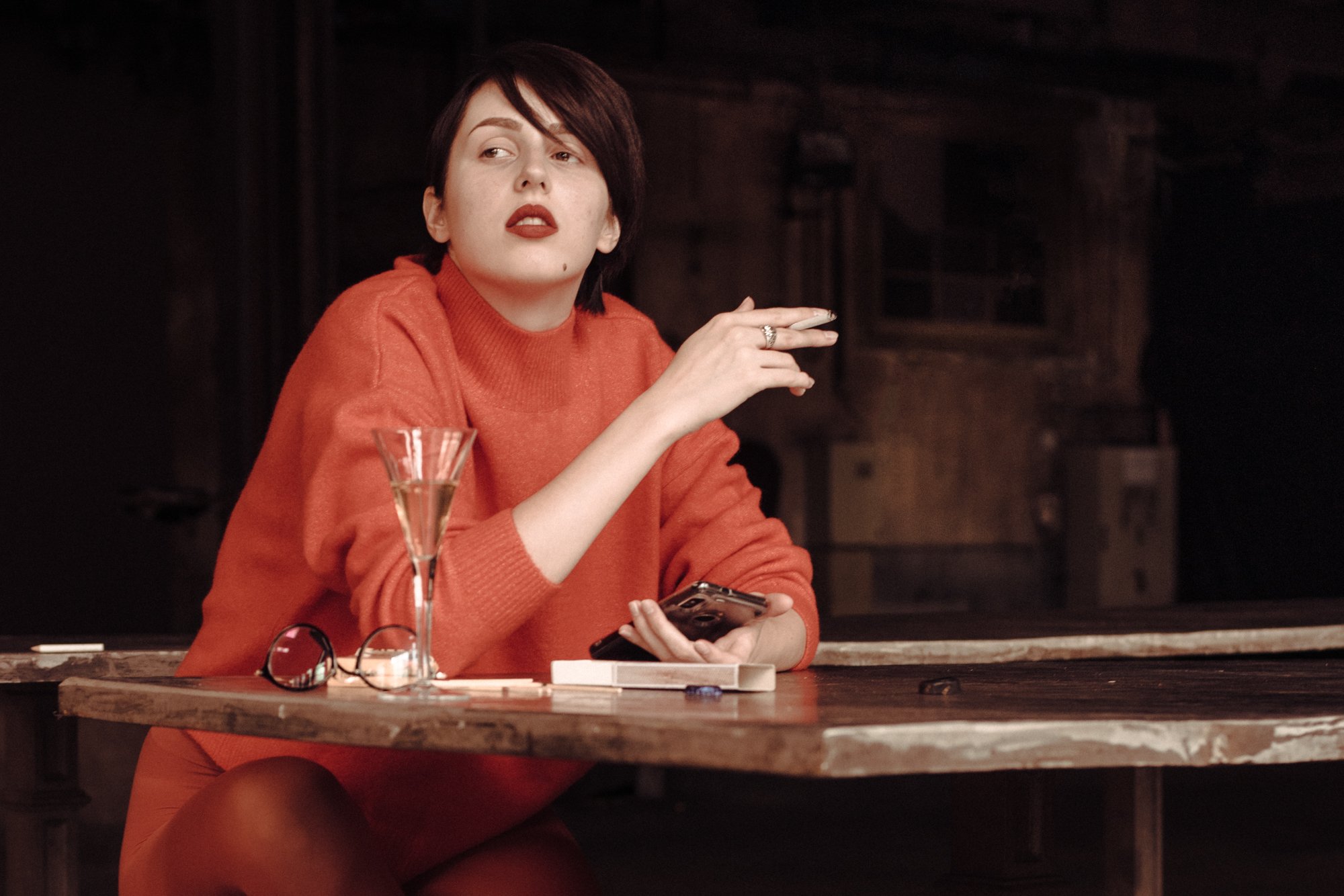Behind the image: “The Portrait of Sylvia von Harden”
Project Summary
The images in ‘31 explore social and political parallels between the present and the late 1920s and 1930s.
The project’s limited-edition archival pigment prints measure 28 x 42 cm (11 x 16.5 inches).
Caption to “The Portrait of Sylvia von Harden”
The photograph called “The Portrait of the Journalist Sylvia von Harden” echoes Otto Dix’s eponymous 1926 painting of the Roaring Twenties' “new woman,” strong and unafraid in her modern freedoms. The new woman was the intellectual equal of men, defying male notions of female beauty and rejecting the societal constraints that governed matters of sexuality, gender, and creativity.
Such progressive developments were often quickly crushed by conservative elements, though, and nearly a century later a woman’s right to self-determination remains incomplete and under siege by reactionary social forces. Women throughout the world still struggle to achieve equal rights and economic parity with men. The debate continues between progressive and right-wing activists over the role and liberty of women in society, focusing on issues such as abortion rights, equal pay, access to education, and freedom from physical and emotional abuse. Nearly a hundred years hence, is Dix’s new woman simply a fantasy yet to be achieved?
The Portrait of Sylvia von Harden - 2020
Copyright: Zsofia Daniel; In frame: Daria Honcharova
The Title
Otto Dix's The Portrait of the Journalist Sylvia von Harden s one of the most iconic images of Germany’s influential New Objectivity art movement. When Dix created it in 1926 he depicted a new side of German society: a female intellectual, the Neue Frau (new woman), representing discourses about sexuality, equality, and urban mass society. His painting captured the Weimar Republic’s progressive values, soon to be erased by the Nazi Party. This woman redefined her gender: She was the intellectual equal of men, and freed from societal constraints that governed such matters as sexuality, gender, and creativity. In Dix’s iconic painting she also defies traditional male notions of female beauty.
Otto Dix: Portrait of the Journalist Sylvia von Harden, 1926
Detail of “The Portrait of Sylvia von Harden* from the fine art photography project ‘31
Modernisation
The subject of this photograph is a new woman for the 21st century—strong, unafraid, and comfortable in her self-determination.
In this image I used colours and props that evoke the original painting, but integrated a mobile phone and a pullover from a fast-fashion label to pull the image into the 21st century.
While retouching the image I consciously left blemishes, bags under the eyes, and wrinkles in clothing that would usually be removed in a fashion image. These small details add realism to the photograph and distance it from modern fashion and beauty imagery.

